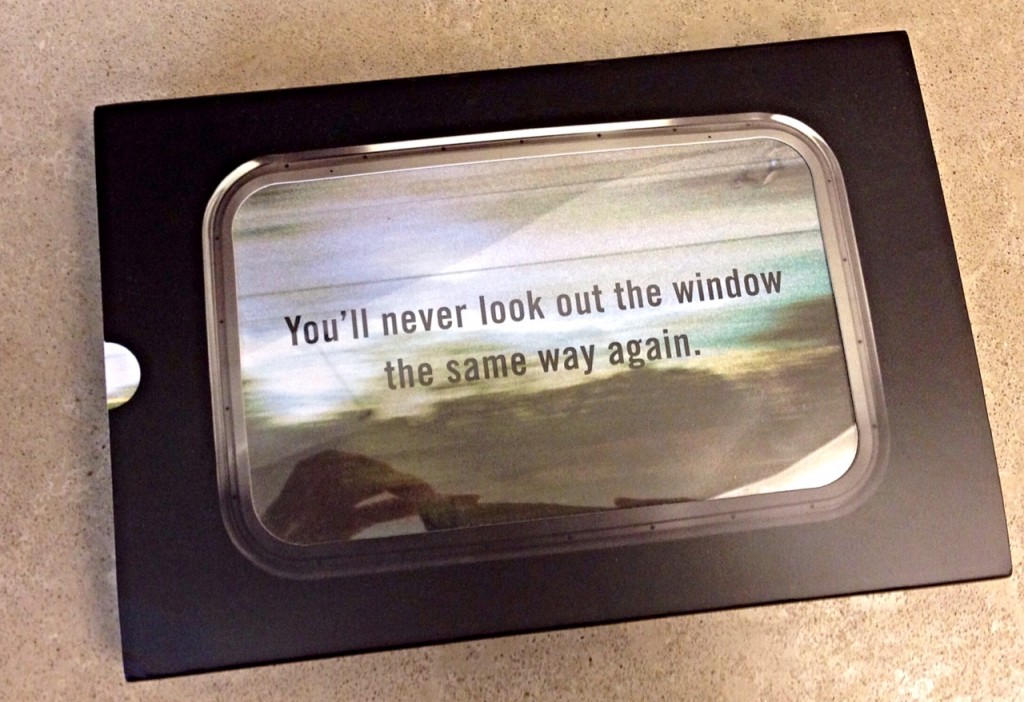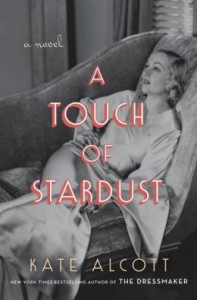 Last year was the 75th anniversary of the movie Gone with the Wind, and now Kate Alcott’s novel A Touch of Stardust takes readers behind the scenes during the filming of that landmark production.
Last year was the 75th anniversary of the movie Gone with the Wind, and now Kate Alcott’s novel A Touch of Stardust takes readers behind the scenes during the filming of that landmark production.
In 1938, bright-eyed Julie Crawford from Fort Wayne, Ind., comes to Los Angeles with dreams of writing for the silver screen, inspired after hearing trailblazing screenwriter Frances Marion speak at Smith College, her alma mater. Julie gets a job in the publicity office at Selznick International Pictures, the production company of famed producer David O. Selznick, who has just started filming the movie adaptation of Margaret Mitchell’s novel.
Julie quickly gets fired by the mercurial Selznick, but not before meeting the actress Carole Lombard, who is also from Fort Wayne and makes Julie her personal assistant. Julie gets an intimate glimpse of the love affair between her employer and Clark Gable, as she tries to juggle her own romance with Selznick’s assistant producer and navigate the treacherous terrains of Tinseltown.
Fans of old-Hollywood glamour will be captivated by the shimmery details Alcott serves up about life on movie sets and in movie stars’ homes, in a blend of fact and fiction. The most entrancing character is the sassy, blunt-spoken Lombard, whom the author brings so vividly to life that the actress’s tragic death at a young age (mentioned only in the epilogue) feels like a huge loss all over again. Julie and her boyfriend, Andy, are a bit flat compared to Lombard and Gable, but Alcott’s novel should be a breezy read for those with stardust in their eyes.
Nerd verdict: Shimmery Stardust
]]>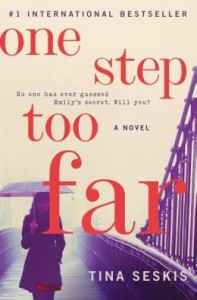 At the start of British author Tina Seskis’s debut novel, One Step Too Far, a married lawyer named Emily Coleman is running away from her family and establishing a new identity as the single Catherine “Cat” Brown, who lives in a hovel with a gaggle of roommates. Her personality and wardrobe get a complete makeover, as does her career.
At the start of British author Tina Seskis’s debut novel, One Step Too Far, a married lawyer named Emily Coleman is running away from her family and establishing a new identity as the single Catherine “Cat” Brown, who lives in a hovel with a gaggle of roommates. Her personality and wardrobe get a complete makeover, as does her career.
She lands a job answering phones at an ad agency and works her way up to account manager within nine months. Her success is tempered, however, by the dreaded anniversary of the event that sent her on the run. Can she keep up her façade as the date approaches, or will her new life unravel under the strain of her secret?
Seskis slowly doles out the details surrounding the darkness in Emily’s past while keeping momentum, showing the devastation Emily’s husband experiences even as she tries to forget him, and moving back and forth in time to delve into Emily’s family history. Frances, Andrew and Caroline—her mother, father, and sister—are all flawed and often unlikable, but they’re well-fleshed-out characters with clear and plausible motivations who make no excuses for their bad behavior.
The novel is touted as a psychological thriller with a shocking twist. It’s more accurate to say One Step Too Far is a study of a dysfunctional family. The end is not so much a twist as an explanation of Emily’s behavior that will leave readers feeling gut-punched.
Nerd verdict: Absorbing if not Too twisty
]]>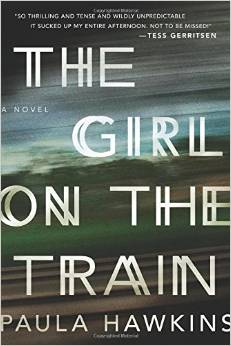 And now I’ve read British author Paula Hawkins’s The Girl on the Train, which is similar in that I couldn’t stand any of the characters (save for one) but I still tore through the book to get to the resolution. These two novels taken together made me ponder: Do we need to like the main characters in order to like a story?
And now I’ve read British author Paula Hawkins’s The Girl on the Train, which is similar in that I couldn’t stand any of the characters (save for one) but I still tore through the book to get to the resolution. These two novels taken together made me ponder: Do we need to like the main characters in order to like a story?
But first, more about the Hawkins book. Rachel, one of three narrators, is the titular girl on the train. She’s been laid off but still takes the same train every day that she used to take to work because she can’t bear to tell her roommate the truth. The train stops at the same signal daily so Rachel regularly sees a young couple in a house along the tracks, where she envisions they live the perfect life she longs for herself.
One day, she sees the wife doing something, ah, less than perfect, and shortly thereafter, the papers announce that the woman, whose name is Megan, is missing. Rachel starts inserting herself into the investigation, believing she alone holds an important clue.
The story is also told from Megan’s POV in chapters dated before she disappears, and late in the book, the new wife of Rachel’s ex-husband, Anna, chimes in with her own versions of events.
The pacing is as fast as a bullet train and Hawkins sure knows how to keep readers guessing about what happened to Megan. Rachel gets herself in hot water as she keeps trying to help solve the case. The problem is that I was disgusted by all the leads’ behavior. They are selfish, boorish people for whom I have little sympathy, if any.
Rachel is a wallowing, self-pitying alcoholic who drinks so much she has blackouts, during which she pees herself and then leaves her vomit and urine-stained jeans around the flat for her long-suffering roommate to see. And she lies a lot. It’s kind of spoilery to say much about Megan and Anna but they behave in appalling ways as well.
So I go back to: How do you describe a book that keeps you engrossed with its plot but repulses you with its characters? (This isn’t rhetorical—would love to see your answers in the comments.) Is it accurate to say I enjoyed it when I was deeply annoyed while reading? But I definitely wasn’t bored and could appreciate Hawkins’s deft handling of language and story structure.
There’s also something to be said for female characters who own their rough edges and have no desire to be soft or people pleasing. If they were real, they probably couldn’t care less whether or not I like them and that’s a strength in itself.
My opinion of this book probably doesn’t matter, either, and it will likely garner many fans, based on the raves already out there (like the NYT’s). Just take the Train and judge for yourself.
Nerd verdict: Train is fast and suspenseful but carries repugnant people
Note: Most of the ARCs I receive are not as nice as the finished books, but this ARC came in very creative packaging. It was encased in a sleeve evoking a view from a window on a moving train. I’m a sucker for attractive packaging so this made want to read the book immediately. Well done, Riverhead!
Photo: Lauren O’Brien
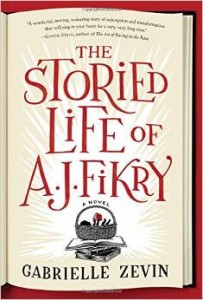 I haven’t written much in the last two weeks because the books and movies I consumed were either sadly bland or outright annoying. The curse was broken when I read Gabrielle Zevin’s The Storied Life of A. J. Fikry, a gem for those who believe “a town isn’t a town without a bookstore.”
I haven’t written much in the last two weeks because the books and movies I consumed were either sadly bland or outright annoying. The curse was broken when I read Gabrielle Zevin’s The Storied Life of A. J. Fikry, a gem for those who believe “a town isn’t a town without a bookstore.”
A. J. Fikry is a curmudgeon who owns a bookstore in a fictional town called Alice, a small island off the New England coast. He lives alone above the store after his pregnant wife Nic died in a car accident.
One day, when he returns after a run, he finds a two-year-old girl abandoned in his store. The accompanying note identifies the child as Maya, and her mother, who’s unable to take care of the toddler, wishes for the little girl to be raised around books.
A. J. at first considers turning Maya over to children’s services, but he and the child quickly form a bond and he ends up adopting her. What follows is a story of a man teaching his daughter the value of words, how they can transform us, illuminate us, and help us communicate love.
Though the book contains only 258 pages, Zevin manages to pack in a lot of story and emotions. She does this by choosing just the right amount of words to incisively describe scenes and people. Here’s the description of the social worker who comes for Maya:
If Jenny were a book, she would be a paperback just out of the box—no dog ears, no waterlogging, no creases in her spine. A.J. would prefer a social worker with some obvious wear.
Here’s a portrait of A.J.’s sister-in-law:
In the fifteen or so years he has known her, A.J. thinks Ismay has aged like an actress should: from Juliet to Ophelia to Gertrude to Hecate.
And how can you not agree with a man who believes you can learn everything you need to know about a person based on his/her answer to the question What’s your favorite book?
Life is heartwarming without being saccharine, incredibly moving without trying too hard to jerk your tears. A. J. may soften up a bit after Maya enters his life, but he stays true to who he is; he doesn’t suddenly turn all mushy. And Maya is adorable but not cloyingly so.
My only quibble is that there are some issues with the tense. The narrative is written in present tense, so when a character refers to something in the past, simple past tense should be used, not past participle. For example,
She thinks back to a sophomore seminar she had taken in literary theory…
Should be:
She thinks back to a sophomore seminar she took…
The inconsistent tense became a bit distracting at times, but the story is so lovely, the characters so memorable that this book will easily be a top-five (if not top-three) book for me this year.
Nerd verdict: Life is beautiful
]]> In Jean Kwok’s follow-up to Girl in Translation, twenty-two-year-old Charlie Wong starts out as a dishwasher at a restaurant in Chinatown, where her father is a noodle maker. She has an eleven-year-old sister, Lisa, and all three live together in a tiny apartment, barely scraping by.
In Jean Kwok’s follow-up to Girl in Translation, twenty-two-year-old Charlie Wong starts out as a dishwasher at a restaurant in Chinatown, where her father is a noodle maker. She has an eleven-year-old sister, Lisa, and all three live together in a tiny apartment, barely scraping by.
One day Lisa sees an ad for a receptionist position at a ballroom dance studio and encourages Charlie to apply for it. The girls’ late mother was a star dancer with the Beijing Dance Academy and this would be a way for Charlie to feel closer to her, having inherited—according to Charlie—none of Ma’s talent and grace.
Through a series of events akin to stars aligning, Charlie gets the job and climbs the ranks to become an instructor, blossoming as she finds passion for dancing, even as she hides her new life from her traditional Chinese father. As a major dance competition approaches, Charlie must decide what—and who—she loves most.
Though there are few surprises in this Cinderella story, Kwok’s writing style is accessible and the main characters likable enough for readers to root for them. Charlie is so self-deprecating and such a hard worker that even if her lucky breaks stretch credulity, I was glad they came her way.
Kwok addresses the internal conflict some Asian-Americans feel as they straddle Eastern and Western beliefs, and the struggle they experience when they want to pursue the arts instead of a more financially stable career. It’s hard to believe Charlie is able to hide her dance job from her father for so long, but it’s easy to understand her reasons for doing so.
I was distracted by the stilted, unrealistic dialogue. Characters tend to speak in a way that sounds like writing instead of conversation. When Charlie confides her troubles to one of her dance students, he replies, “What burdens you’ve been shouldering alone.” The speaker is a young male gardener in contemporary New York City, not a middle-aged professor or someone from the early twentieth century.
But the overall narrative voice is engaging enough for me to enjoy this fairy tale, one with heart and wit and such buoyant descriptions of dance it made me want to sign up for lessons and get my mambo on.
Nerd verdict: Mambo moves well
]]>After the review, you’ll get the ninth excerpt from V as part of the sneak peek revealed on the tour, plus links to where you can read the other excerpts and to a contest with a generous prize package from Penguin.
Enjoy!
****
U is for Undertow Review
 I’ve been reading Sue Grafton for a quarter century now, starting in high school when I found her books in the school library (I spent a lot of time there). I devoured the A through C Kinsey Millhone adventures like an ex-con having his first meal on the outside. Over the years the books were uneven, which is understandable with a long series, but I kept reading out of obligation, as if Kinsey had become an old friend whose imperfections I accepted. I listened to her tales even if she rambled a little.
I’ve been reading Sue Grafton for a quarter century now, starting in high school when I found her books in the school library (I spent a lot of time there). I devoured the A through C Kinsey Millhone adventures like an ex-con having his first meal on the outside. Over the years the books were uneven, which is understandable with a long series, but I kept reading out of obligation, as if Kinsey had become an old friend whose imperfections I accepted. I listened to her tales even if she rambled a little.
I was thrilled, then, to find her latest adventure, U is for Undertow, utterly captivating. After only a few pages, I knew Kinsey was back on track and I could dive in out of pure pleasure.
The case begins when Kinsey is approached by a young man named Michael Sutton who suddenly remembers something that happened when he was six years old. At the time, Sutton attached no significance to the incident but, after reading a newspaper article about an unsolved 21-year-old kidnapping of a little girl, he believes what he saw were two people burying the child.
After Sutton hires Kinsey to investigate, the story moves back and forth between 1988 (Kinsey’s present) and 1967, when the kidnapping occurred. Grafton deftly juggles multiple POVs; besides Kinsey’s, the author doles out pieces of the puzzle from the perspectives of several characters who are directly and tangentially involved in the crime, painting a full-bodied portrait of each. The plot turns in unpredictable directions and though it might be obvious early on who did it, Grafton keeps you guessing about the why.
The case is complex enough to keep Kinsey busy, but she’s also grappling with personal issues after making startling discoveries about her past which destroy her long-held perceptions of certain family members. Because the books are told in first person and I’ve sided with Kinsey for years against the relatives who abandoned her as a child, these new revelations threw me for a loop as well. Kinsey won’t be able to change overnight but at the end of this book, she takes brave, hopeful steps towards what could be an extreme life makeover.
Nerd verdict: Strong Undertow will pull you in
 Continuing down the alphabet, below is the ninth excerpt from V is for Vengeance. You might first want to read part 1 at Lesa’s Book Critiques, pt. 2 at Jen’s Book Thoughts, pt. 3 at Book Reviews by Elizabeth A. White, pt. 4 at Linus’s Blanket, pt. 5 at Devourer of Books, pt. 6 at Kittling: Books, pt. 7 at BermudaOnion’s Weblog, and pt. 8 at Jenn’s Bookshelves. Reviews of books Q through T can also be found there. On Thursday, drop by Booking Mama, who will wrap up the blog tour with another review of U and the final V excerpt.
Continuing down the alphabet, below is the ninth excerpt from V is for Vengeance. You might first want to read part 1 at Lesa’s Book Critiques, pt. 2 at Jen’s Book Thoughts, pt. 3 at Book Reviews by Elizabeth A. White, pt. 4 at Linus’s Blanket, pt. 5 at Devourer of Books, pt. 6 at Kittling: Books, pt. 7 at BermudaOnion’s Weblog, and pt. 8 at Jenn’s Bookshelves. Reviews of books Q through T can also be found there. On Thursday, drop by Booking Mama, who will wrap up the blog tour with another review of U and the final V excerpt.
If you leave a comment on all ten participating blogs, you’ll be eligible to win one of three sets of the Q through U books, plus a copy of V is for Vengeance, courtesy of Penguin. US/Canada residents only.
V: Excerpt #9
The younger woman pressed the down button repeatedly as though to speed the arrival of the car. The elevator doors opened and two pregnant mothers emerged side by side, pushing strollers ahead of them. The younger woman pushed her way past them, and one turned to look at her with annoyance. Another shopper approached in haste and called out, not wanting the doors to close before she had a chance to get on. One of the pregnant women reached back and put a hand against the doors to stall their closure. The shopper smiled gratefully as she stepped in, murmuring her thanks. The elevator doors closed as the two pregnant women ambled off toward infant and children’s wear.
I made a beeline for the fire exit, laid one hip against the push-bar, and entered the stairwell. I went down as rapidly as possible, dropping two steps at a time while I calculated the younger woman’s escape alternatives. She could take the elevator as far as the second floor or the first, or proceed all the way down to the basement level, where the parking garage was located. If she realized I was on her tail, she might leave the elevator on 2 and take the escalator up to 3 again, in hopes of throwing me off course. On the other hand, she probably wanted to get out of the store as quickly as possible, which made the first floor the obvious choice. Once she slipped into the busy mall, she could doff the white linen jacket and the red beret and hurry away, knowing there was no chance I’d reach the exit doors before she’d been swallowed into the crowd. I reached the second-floor landing and used the railing as a pivot as I took the next flight down, muffled footsteps echoing as I ran. Another possibility occurred to me as I galloped down the stairs. If she’d arrived at the store with an eye to a leisurely day of thieving, she might have wanted her car handy, with a trunk capacious enough to accommodate multiple shopping bags stuffed with stolen goods. How many times had I seen shoppers dropping bags off at the car before returning to the mall?
I rounded the landing at the first floor and bypassed the exit as I sped toward the parking garage. I took the final short flight of stairs in two leaps. The door at the bottom opened into a small carpeted lobby with offices visible behind a set of glass doors. The exit doors slid open as I reached them and then politely closed behind me. I paused to take in the vast underground garage. I was standing in a dead-end bay, circumscribed by a short loop of parking spaces coveted because of their proximity to the store’s entrance. I’ve watched cars circle endlessly, hoping to snag one of these treasured slots. Now all of them were taken and there was no sign of backing-out taillights to suggest a vacancy coming due.
V may stand for vengeance in Kinsey’s world, but what does the letter represent in your life right now? Leave a comment and you might win a set of books!
For more information on Sue and her upcoming in-person tour, visit her Facebook page.
]]> George Pelecanos begins another series with The Cut, introducing new protagonist Spero Lucas, a 29-year-old Iraq War veteran who does investigations for a D.C. defense attorney. One of the attorney’s clients, a drug dealer, hires Lucas to find and retrieve his stolen shipments of marijuana. The job seems standard fare at first, with Lucas canvassing neighborhoods and looking for witnesses. But then a double murder occurs, and Lucas finds he needs all the warrior skills he learned while fighting in Fallujah to go up against his formidable opponents.
George Pelecanos begins another series with The Cut, introducing new protagonist Spero Lucas, a 29-year-old Iraq War veteran who does investigations for a D.C. defense attorney. One of the attorney’s clients, a drug dealer, hires Lucas to find and retrieve his stolen shipments of marijuana. The job seems standard fare at first, with Lucas canvassing neighborhoods and looking for witnesses. But then a double murder occurs, and Lucas finds he needs all the warrior skills he learned while fighting in Fallujah to go up against his formidable opponents.
Lucas is an appealing lead, made more so by his contradictions. He’s a tough guy who regularly dines with his mother. He has an iPhone but likes reading the print version of the newspaper. He may have witnessed horrors in Iraq but can be refreshingly naïve when it comes to women. And he can work on both sides of the law, as long as the job pays well.
Pelecanos has the amazing ability to cut to the heart of something in very few words. Witness the following: “They kissed standing up in her living room. Her mouth was made for it.” Are any more words necessary to describe how perfect the kiss is? As always, the author has a sharp ear for dialogue, giving Lucas witty banter with his brother Leo, and rarely relying on tags and character attribution to indicate who’s talking in any given scene. The dialogue does get too expository at times, but the pace is fast enough that those instances can be overlooked. Readers will want to add The Cut to their Pelecanos collections, and it’s good to know Lucas will be back to fight another day.
Nerd verdict: Both hero and writing are sharp in Cut
]]>
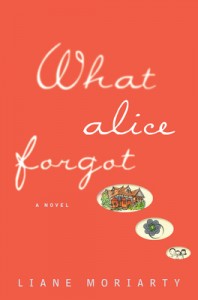 I mentioned in my review for S.J. Watson’s Before I Go to Sleep that amnesia seems to be a hot topic this summer (Marcus Sakey’s The Two Deaths of Daniel Hayes also features an amnesiac) but I’ve noticed something else that’s popular: characters named Alice. Laura Harrington’s superb debut novel and her lead character are both named Alice Bliss, Alafair Burke has an Alice as her Long Gone protagonist, Elle Fanning plays Alice in the movie Super 8, and the book I’m reviewing today, What Alice Forgot, combines the two trends by featuring a lead named Alice who has amnesia.
I mentioned in my review for S.J. Watson’s Before I Go to Sleep that amnesia seems to be a hot topic this summer (Marcus Sakey’s The Two Deaths of Daniel Hayes also features an amnesiac) but I’ve noticed something else that’s popular: characters named Alice. Laura Harrington’s superb debut novel and her lead character are both named Alice Bliss, Alafair Burke has an Alice as her Long Gone protagonist, Elle Fanning plays Alice in the movie Super 8, and the book I’m reviewing today, What Alice Forgot, combines the two trends by featuring a lead named Alice who has amnesia.
Alice Love falls down while at the gym, hits her head and loses all memory of the last ten years of her life. She thinks she’s 29 instead of 39, and the last thing she remembers is being broke, pregnant with her first child, and deeply in love with her husband, Nick. Imagine her shock, then, when she calls him from the hospital and gets a nasty, unsympathetic reaction from him. Is their marriage no longer idyllic? And she has three children now?
In the weeks that follow her fall, Alice tries to reclaim her life but finds it has changed drastically. She has somehow attained the house of her dreams and a nice toned body, but her kids and the person she’s become are strangers to her. Her eldest daughter seems to resent her, her once-close sister has become distant, and her friends are all catty, bitchy women. She apparently also has a new suitor but she still loves Nick while he wants nothing to do with her. Does Alice really want to recover her memories if they’ll only tell her how she ended up here?
This novel is much more thought-provoking than the premise sounds. Moriarty tackles some weighty subjects but does so with a light hand and breezy pace. She uses wit to examine the complexities of life, how it can alter in small ways without our noticing until one day we might wake up to an existence beyond our recognition. Could we prevent that from happening if we can somehow see where we end up years from now? Or is change inevitable and necessary in order to survive?
Moriarty doesn’t make things black and white for Alice or predictable for the reader. There’s a bit of mystery about what happened during her lost decade, and how Alice will deal with the knowledge when she regains it. The ending is moving and may surprise readers who think they’ve got everything figured out. Alice’s journey is messy and sad and joyful, much like life itself.
Nerd verdict: Delightful, thought-provoking Alice
]]>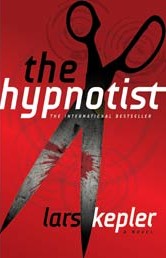 Lars Kepler’s The Hypnotist is already a smash in Sweden and other Scandinavian countries since its release there in 2009. It hits our shores this week with strong buzz and that dreaded tag I refuse to use: the NSL. You know, the next author who’s like that guy who wrote the Lisbeth Salander novels. It’s a lazy shorthand that undermines an original and exciting novel that can stand perfectly well on its own merits, thanks very much.
Lars Kepler’s The Hypnotist is already a smash in Sweden and other Scandinavian countries since its release there in 2009. It hits our shores this week with strong buzz and that dreaded tag I refuse to use: the NSL. You know, the next author who’s like that guy who wrote the Lisbeth Salander novels. It’s a lazy shorthand that undermines an original and exciting novel that can stand perfectly well on its own merits, thanks very much.
The novel doesn’t bother with any plodding exposition; its very first line is “Like fire, just like fire,” as a boy—the sole survivor (barely) and witness to the slaughter of his family—describes under hypnosis what he saw. What he reveals is even more disturbing than the carnage left at the scene.
The session also opens a Pandora’s box for the hypnotist, Erik Maria Bark, who had sworn never to use hypnosis again after his practice led to tragic events ten years earlier. When news gets out that Bark had hypnotized the boy, Bark and his family are suddenly in grave danger. It’s up to Detective Joona Linna, who is always right, to protect the Barks and solve two gruesome cases that might be related.
Lars Kepler is actually a nom de plume for married couple Alexander and Alexandra Ahndoril, self-admitted movie lovers who have said they wanted to write a cinematic novel. They succeeded, constructing a hard R-rated story (for extreme violence) with nerve-racking scenes that make you squirm and want to cover your eyes. Yes, I actually yelled “Don’t go down there!” at my Nook. Read this scene in which a retired detective and his daughter—the hypnotist’s wife—are searching for clues in the dark basement of the house where the massacre occurred and tell me it doesn’t unnerve you:
A tapping noise comes from the ceiling, and Simone looks over at the stairs and then at her father. He doesn’t seem to hear the sound. He walks slowly toward a door at the far end of the room. Simone bumps into a rocking horse. Kennet opens the door and glances into a utility room containing a battered washing machine and dryer and an old-fashioned wringer. Next to a geothermal pump, a grubby curtain hangs in front of a large cupboard.
“Nobody here,” he says, turning to Simone.
She looks at him, seeing the grubby curtain behind him at the same time. It is completely motionless yet at the same time alive.
“Simone?”
There is a damp mark on the fabric, a small oval, as if made by a mouth…
It seems to Simone that the damp oval suddenly caves inward. “Dad,” she whispers.
There is no shame in admitting you might need Depends after reading that. I’ll wait while you pull it on.
The novel’s other strong point is its twisty, fast-paced plot. It’s just one WTF thing after another, leaving no chance for either characters or readers to relax. I did get frustrated with how Erik and Simone got so stressed, they couldn’t even communicate with each other, sometimes causing hurtful actions to come out of simple misunderstandings. But Detective Joona Linna is an amusing lead. He often gloats about how he’s never wrong but instead of coming across as arrogant, he instills confidence that’s badly needed when situations take really nasty turns.
Nerd verdict: Disturbing, suspenseful and thrilling Hypnotist
To read the first thirteen chapters, go here. Seriously, leave the lights on and have a change of undies.
]]>Hope you’re having a fantastic day and making your fathers happy, wherever they are.
***********
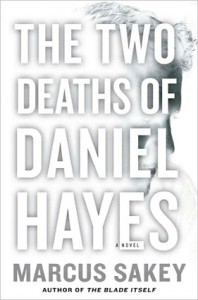 Marcus Sakey wastes no time plunging readers right into the depths of his thrilling new novel, The Two Deaths of Daniel Hayes. The first scene has a man waking up in the middle of an ocean, naked, in the dead of night, with no memory of who he is and how he got there. He manages to make it to land, find an abandoned car, and drive to a nearby hotel. But then a cop comes after him. What has he done? Why is he drawn to an actress he sees on TV? How does he find his way back to his life and what will he find there?
Marcus Sakey wastes no time plunging readers right into the depths of his thrilling new novel, The Two Deaths of Daniel Hayes. The first scene has a man waking up in the middle of an ocean, naked, in the dead of night, with no memory of who he is and how he got there. He manages to make it to land, find an abandoned car, and drive to a nearby hotel. But then a cop comes after him. What has he done? Why is he drawn to an actress he sees on TV? How does he find his way back to his life and what will he find there?
The protagonist turns out to be a screenwriter, and sometimes his flashbacks unfold as scenes from a screenplay. In Sakey’s hands, this method works rather well. The film rights to three of Sakey’s previous four novels have sold to Hollywood and it wouldn’t be surprising if this one sells, too.
But you shouldn’t wait for any potential movie because you’d miss out on Sakey’s sharp, vivid prose, describing low-rent motels as “places people came to hang themselves,” and a woman in a convertible as “a blonde whose hair stirred like a dream of summer.” He also shows a sense of humor with observations like the following:
“Luckily, he was in Los Angeles. If a second head had sprouted from his belly and begun pitching a spec script, it wouldn’t have drawn more than a glance.”
No matter where you are, you should definitely give Two Deaths more than a glance.
Nerd verdict: Sharp, thrilling Two Deaths
]]>